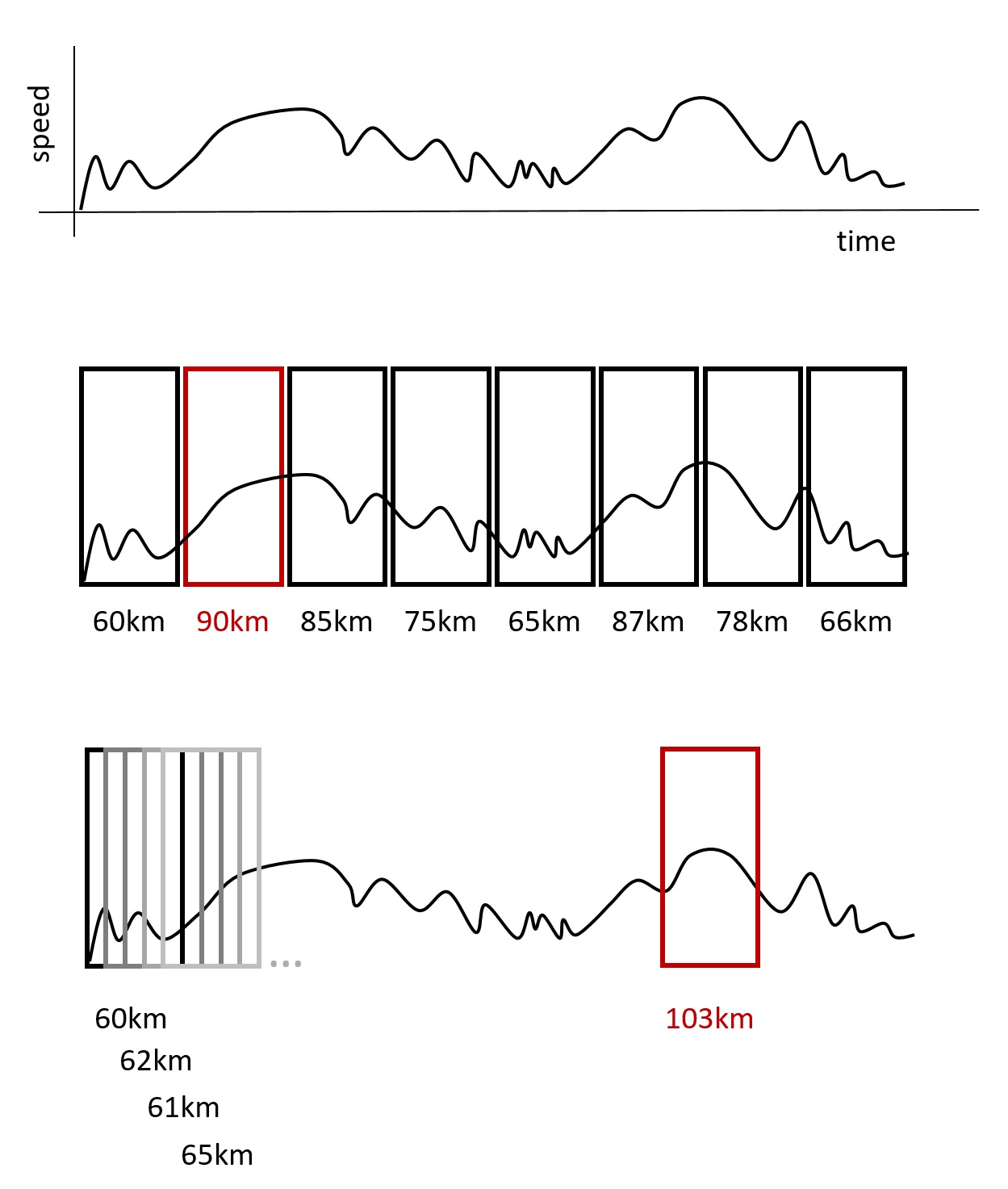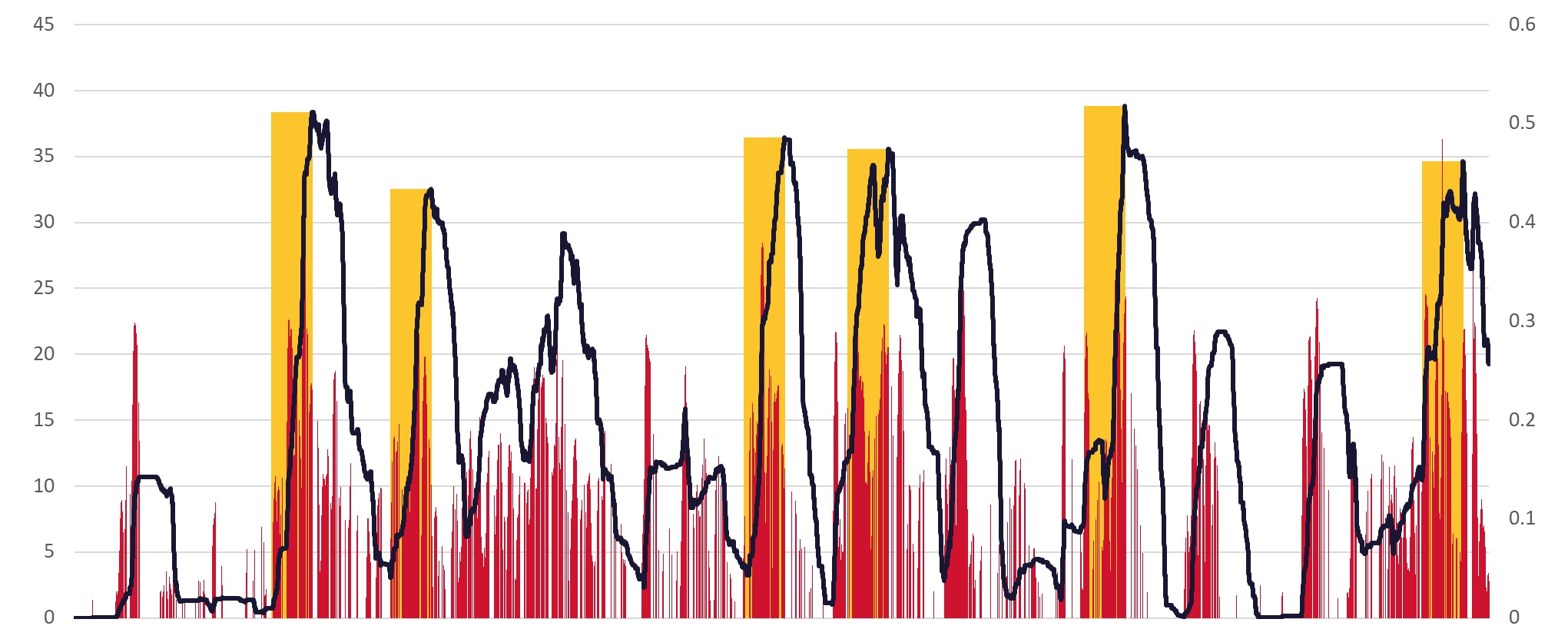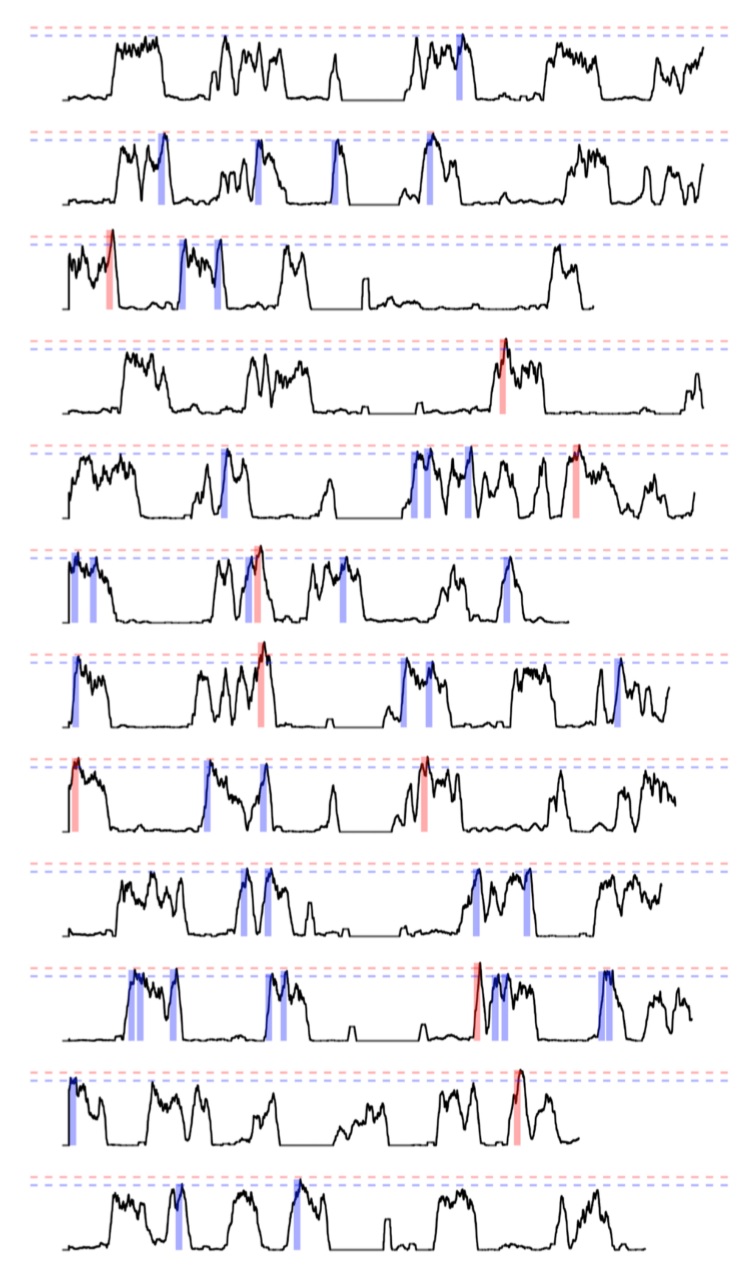January 22, 2021
Performance
Team sports performance
The repetition of most demanding scenarios in team sports.
What if the most demanding scenario doesn’t only happen once?
This story starts in a windowless office in the Palau Blaugrana. Like all stories, it begins with an element of chance. As we were talking about rotations in sports with unlimited substitutions, fatigue and other subjects that tend to come up at these impromptu meetings; the following doubt appeared on the board: What if a most demanding scenario doesn’t only happen once but several times? Straight after asking ourselves the question, we started turning it around in our heads. To begin with, it wasn’t expressed very well (if a scenario is most demanding, there can only be one: the maximum, which therefore cannot be repeated), but the matter went on to take up a large part of our days. Before continuing, we had to decide what a most demanding scenario is and how it is found.
Most demanding scenarios
The most demanding scenario is, to put it simply, the moment of a game (or training session) when for a certain period of time the player comes to accumulate the most extreme amount of metres / repetitions / load in a certain EPTS (also known as GPS) recorded variable. This is an extremely reductionist view as we need to take into account other variables (tactical, mental or emotional) that influence the determination of the most demanding scenario of all; but for the purposes of our explanation it is better to stick to the simple definition.
An example could be the following: a family makes an 8-hour trip to go on vacation, and they are interested in knowing which hour they travelled the most kilometres. There are two ways to work this out:
- One option would be to divide these 8 hours into eight one-hour windows and look at the GPS or milometer to know how many miles they covered in each hour. We call this first option fixed-length windows. This system tells us which hour the car travelled the most kilometres, but there’s a problem. The 60 minutes when the car travelled the furthest could have happened in a period that has been split across two contiguous time-windows.
- The second option appears to solve the previous issue. Once the family has been travelling for an hour, they count the kilometres they have covered. When they’ve been travelling for an hour and one minute, they count the kilometres covered in the previous 60 minutes. When they’ve been travelling for an hour and two minutes, they count the kilometres covered in the previous 60 minutes, and so on successively until they reach their destination. This system tells them the exact minute in which they have travelled the most kilometres in an hour, i.e. the most demanding scenario for the family car. We call this option moving windows or the moving average method.

So, we knew what the most demanding scenarios were, but now we wanted to know how often they are repeated. The idea arose that it might be directly related with the repetition of scenarios: the linear encoders that are used in the gym for speed-based strength training.
Linear encoders and speed-based strength training
Linear encoders are sensors that are used to accurately measure the speed at which a weight, machine or gym bar moves. These sensors allow us to add a variable to strength training: execution speed.
An example of how they work could be the following: A hurdler’s coach wants to programme a series of squats in which his athlete always works at a very high speed of gesture execution; and when that speed drops because fatigue has come into play, the athlete stops because he is no longer working in the threshold that the coach has programmed for that day. To do so, he connects the encoder to the weight bar that the athlete is wearing and a screen shows each repetition in real time and the speed at which it is performed. On the third repetition, the athlete performs the maximum speed but he gradually gets slower and slower. The coach has decided that when his athlete drops below 90% of the fastest repetition, he will tell the athlete to stop. This happens on the eighth repetition and the program that displays the athlete’s speed in real time warns him the speed has dropped below 90% of his best repetition for that series, whereupon the coach makes a signal for his athlete to stop. This is an example of how a linear encoder and speed can be used to train strength.
Speed of each repetition of a split squat, in which case there is no calculated threshold. But it allows us to view the speed of each repetition.
Could the idea used by some fitness coaches when using encoders also be useful for analysing EPTS data in a game to see how many scenarios are repeated? Ultimately, there were many parallels:
REPETITIONS OF A SQUAT ABOVE 90% OF THE MAXIMUM SPEED FOR THAT SERIES
=
REPETITIONS OF A ONE-MINUTE SCENARIO ABOVE 90% OF THE MOST DEMANDING SCENARIO IN THAT GAME
So, if we could imitate an encoder to be able to see all those scenarios that we want to see within our chosen range of intensity, we could then quantify the concept of repetition of scenarios.
An encoder of training scenarios
The simplest test was to look for any training session, take the metres travelled over 18 km/h, find the one-minute window with most metres covered and then look for all those windows above a set percentage (in our example, 80%).

A multi-game scenario encoder
Imagine that we know the metres that a futsal player covers in the most demanding minute of a game for a whole season. We could analyse all the games we have to see the scenarios that occur above 90/80/70% of that maximum value that we have registered for the player. The idea is the same as a linear encoder and a speed threshold, applied to a maximum scenario and to our chosen threshold. This is what is published in the Scientific Notes (Illa, Fernández, Tarragó, et al., 2020) of the journal Apunts.
To summarise:
- The value of the most demanding scenario was sought for different variables of a player in different competitive matches. To do so, the three most demanding scenarios of the 12 analysed games were chosen and an average was calculated (to soften this 100% and make it more real, in case a scenario was something completely out of the context of a normal game).
- All games were analysed again looking for the one-minute windows that were above 80% and 90% of the maximum we calculated for the player.
- The average number of scenarios per game was counted.

In the Palau office it seemed to be becoming clear that the scenario encoder might work. We came to realise that we had to find names for these scenarios: they were not most demanding scenarios; they were high or very high demanding scenarios. The idea caught the attention of Xavi Reche, Joan Ramon Tarragó and Gerard Carmona. What we had was a new way to analyse scenarios in team sports. We were no longer just analysing one scenario per game, training session or playing position; we could analyse the repetition, intensity, time between them, overlap between variables, etc…
An encoder for an entire season
The final step was to view the repetition of these scenarios in training and matches. We are now able to answer this question: How many high and very high demanding scenarios in distance at high speed occur for MD-2 in our team? The concept becomes more complex as the questions progress, but the basic idea on which it is all based remains the same: a player has a value of 100% measured in the three highest demand scenarios recorded in matches; to then analyse training sessions and matches, and see how many scenarios above 80% and 90% of their maximum can be found. The article that arose from answering this question is published in Frontiers (Illa, Fernández, Reche, et al., 2020).

It has only just become possible to analyse the repetition of scenarios. We can only imagine how far these concepts can go: will we be able to see how much time has to pass between one scenario and another in order to deal with it with the right guarantees? In a match where do most scenarios arise, at the beginning or at the end? Is it advisable to replace a player after he has done X scenarios? Are goals scored during these close-to-maximum scenarios? It is these and other questions that we need to answer by doing further research in this field.
Daniel Fernandez Raventós y Jordi Illa
References
Illa, J., Fernández, D., Reche, X., Carmona, G., & Tarragó, J. R. (2020). Quantification of an Elite Futsal Team’s Microcycle External Load by Using the Repetition of High and Very High Demanding Scenarios. Frontiers in Psychology, 11. https://doi.org/10.3389/fpsyg.2020.577624
Illa, J., Fernández, D., Tarragó, J. R., & Reche, X. (2020). Most Demanding Passages in Elite Futsal: An Isolated or a Repeat Situation? Apunts: Educación Física y Deportes, 142, 80-84.
KNOW MORE
CATEGORY: MARKETING, COMMUNICATION AND MANAGEMENT
This model looks to the future with the requirements and demands of a new era of stadiums, directed toward improving and fulfilling the experiences of fans and spectators, remembering “feeling” and “passion” when designing their business model.
CATEGORY: FOOTBALL SPORTS PERFORMANCE
Through the use of computer vision we can identify some shortcomings in the body orientation of players in different game situations.
CATEGORY: MEDICINE HEALTH AND WELLNESS
A health check must detect situations which, despite not showing obvious symptoms, may endanger athletes subject to the highest demands.
CATEGORY: FOOTBALL TEAM SPORTS
In the words of Johan Cruyff, “Players, in reality, have the ball for 3 minutes, on average. So, the most important thing is: what do you do during those 87 minutes when you do not have the ball? That is what determines whether you’re a good player or not.”
CATEGORY: MEDICINE HEALTH AND WELLNESS SPORTS PERFORMANCE
Muscle injuries account for more than 30% of all injuries in sports like soccer. Their significance is therefore enormous in terms of training sessions and lost game time.
DO YOU WANT TO KNOW MORE?
- SUBSCRIBE
- CONTACT
- APPLY
KEEP UP TO DATE WITH OUR NEWS
Do you have any questions about Barça Universitas?
- Startup
- Research Center
- Corporate